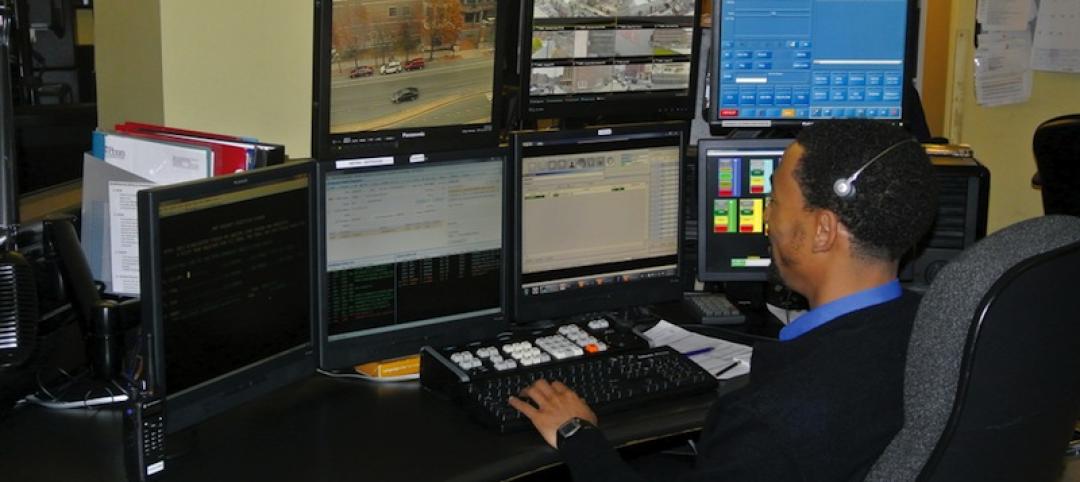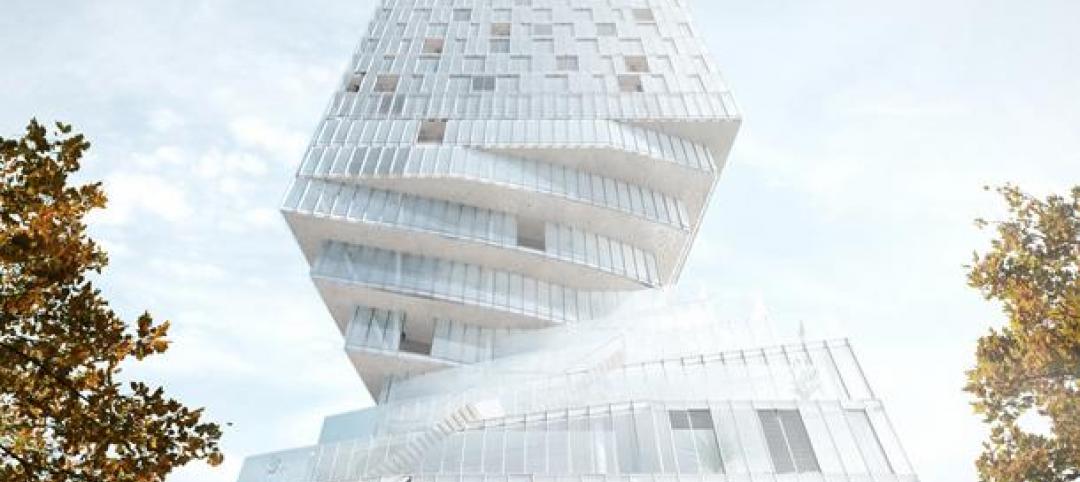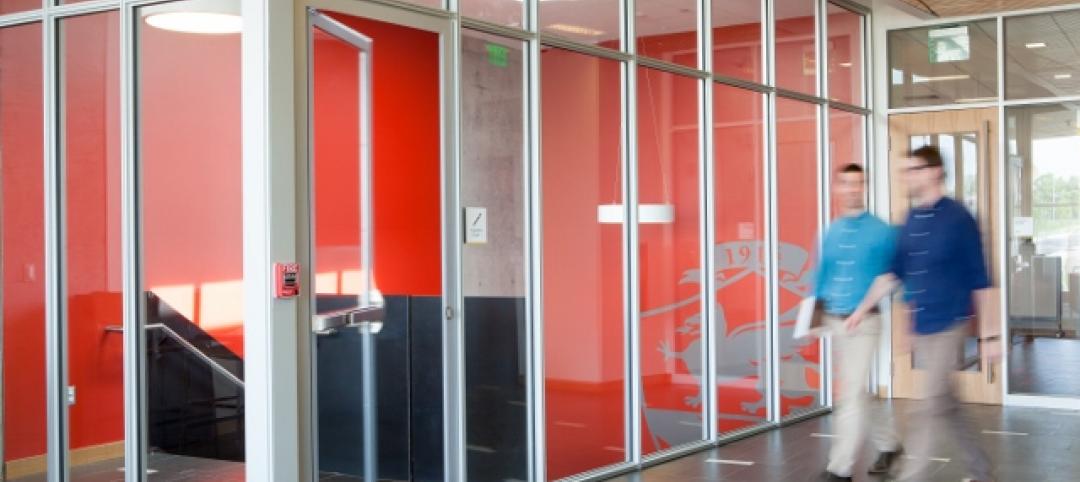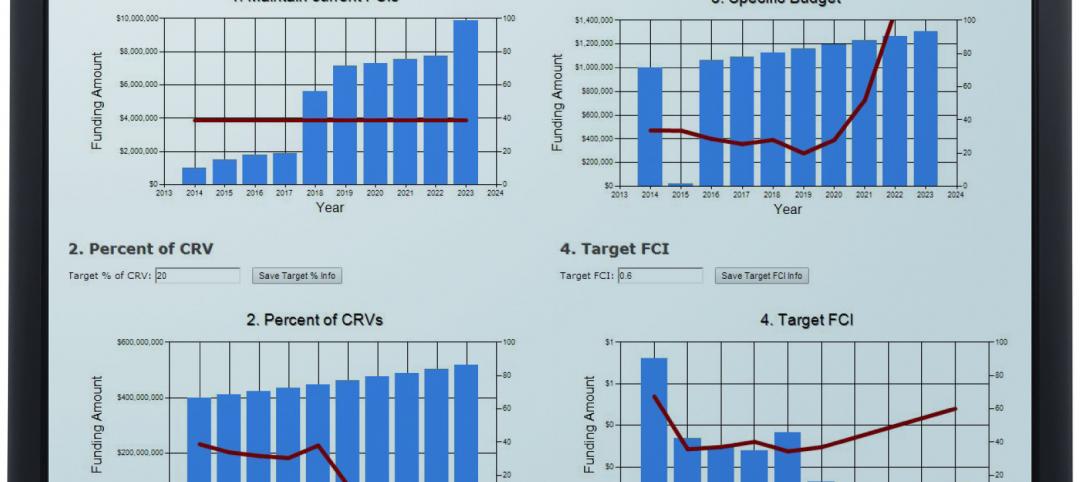AEC Building Teams should work with their clients to conduct a version of the “threat assessment” described in this Special Report.
Such an evaluation should start at the property line and work inward. Many of the questions that a security team would use in a K-12 threat assessment could be applied to office buildings, hospitals, outpatient facilities, hotels, university buildings, stadiums, convention centers, municipal and state government buildings, and other places of congregation:
• Are there exterior conditions that could compromise security—untrimmed bushes that could provide cover for intruders, or unlocked trash receptacles that could become hiding places for weapons or explosives?
• Are exit doors fitted with alarms in case they are propped open?
• Are visitors, tenants, and other building users “funneled” to a main entry point where surveillance at various levels can be conducted?
• Do the security cameras work? Does anyone monitor them? How often?
As our report shows, design and technology are vital to the safety of children, teachers, and staff in schools, but if the staff and users of other building types are not educated in emergency procedures and don’t rehearse them, the damage from an untoward incident could rise significantly.
Staff training and periodic rehearsals in security measures should be de rigueur for virtually every kind of building with public access—hospitals, retail and office facilities, college student unions, performing arts centers, movie theaters, and so on.
Our report raised the sustainability vs. security question for schools, but that quandary also applies to other public or quasi-public building types and uses, such as office buildings, college residence halls and classrooms, hotel lobbies, and restaurants. Owners and users of these buildings—not to mention the architects, engineers, and construction professionals who design and build them—all want as much natural light as the energy model will permit, but daylighting requires lots of glass, and that could raise concerns about security. Building Teams need to work with their owner clients to balance these occasionally conflicting demands.
One of the surprising findings from our exclusive survey of BD+C subscribers was that fully one-third of respondents (33.8%) said they were unfamiliar with Crime Prevention Through Environmental Design, and that only about one in six respondents (16.4%) said they (or their firms) used CPTED principles on a routine basis in K-12 projects.
These respondents were selected on the basis of their heavy involvement in school projects. If they don’t know about CPTED for schools, is it also the case that those who design and build other kinds of public or semi-public facilities have no training in security-related matters? That would be very disturbing.
(Editor's Note: This article is the fourth in BD+C's five-part special report on security design for K-12 school projects. Read the full report.)
Related Stories
University Buildings | Feb 20, 2015
Penn strengthens campus security by reviving its surrounding neighborhood
In 1996, the University of Pennsylvania’s sprawling campus in Philadelphia was in the grip of an unprecedented crime wave. But instead of walling themselves off from their surrounding neighborhoods, the school decided to support the community.
University Buildings | Feb 17, 2015
BD+C exclusive: How security is influencing campus design and construction
Campus crime—whether real or perceived—presents Building Teams with more opportunities for early-stage consultation with university clients.
Mixed-Use | Jan 26, 2015
MVRDV designs twisty skyscraper to grace Vienna's skyline
The twist maximizes floor space and decreases the amount of shadows the building will cast on the surrounding area.
Sponsored | | Aug 16, 2014
Fire-rated framing system makes the grade at Johnson & Wales University Center
The precision engineering of TGP’s Fireframes Aluminum Series creates narrow profiles and crisp sightlines at Johnson & Wales University Center for Physician Assistant Studies
| May 20, 2014
Using fire-rated glass in exterior applications
Fire-rated glazing and framing assemblies are just as beneficial on building exteriors as they are on the inside. But knowing how to select the correct fire-rated glass for exterior applications can be confusing. SPONSORED CONTENT
| Mar 12, 2014
14 new ideas for doors and door hardware
From a high-tech classroom lockdown system to an impact-resistant wide-stile door line, BD+C editors present a collection of door and door hardware innovations.
| Mar 12, 2014
New CannonDesign database allows users to track facility assets
The new software identifies critical failures of components and systems, code and ADA-compliance issues, and systematically justifies prudent expenditures.
| Jan 13, 2014
AEC professionals weigh in on school security
An exclusive survey reveals that Building Teams are doing their part to make the nation’s schools safer in the aftermath of the Sandy Hook tragedy.
| Jan 10, 2014
What the states should do to prevent more school shootings
To tell the truth, I didn’t want to write about the terrible events of December 14, 2012, when 20 children and six adults were gunned down at Sandy Hook Elementary School in Newtown, Conn. I figured other media would provide ample coverage, and anything we did would look cheap or inappropriate. But two things turned me around.
| Jan 10, 2014
Special Report: K-12 school security in the wake of Sandy Hook
BD+C's exclusive five-part report on K-12 school security offers proven design advice, technology recommendations, and thoughtful commentary on how Building Teams can help school districts prevent, or at least mitigate, a Sandy Hook on their turf.

















